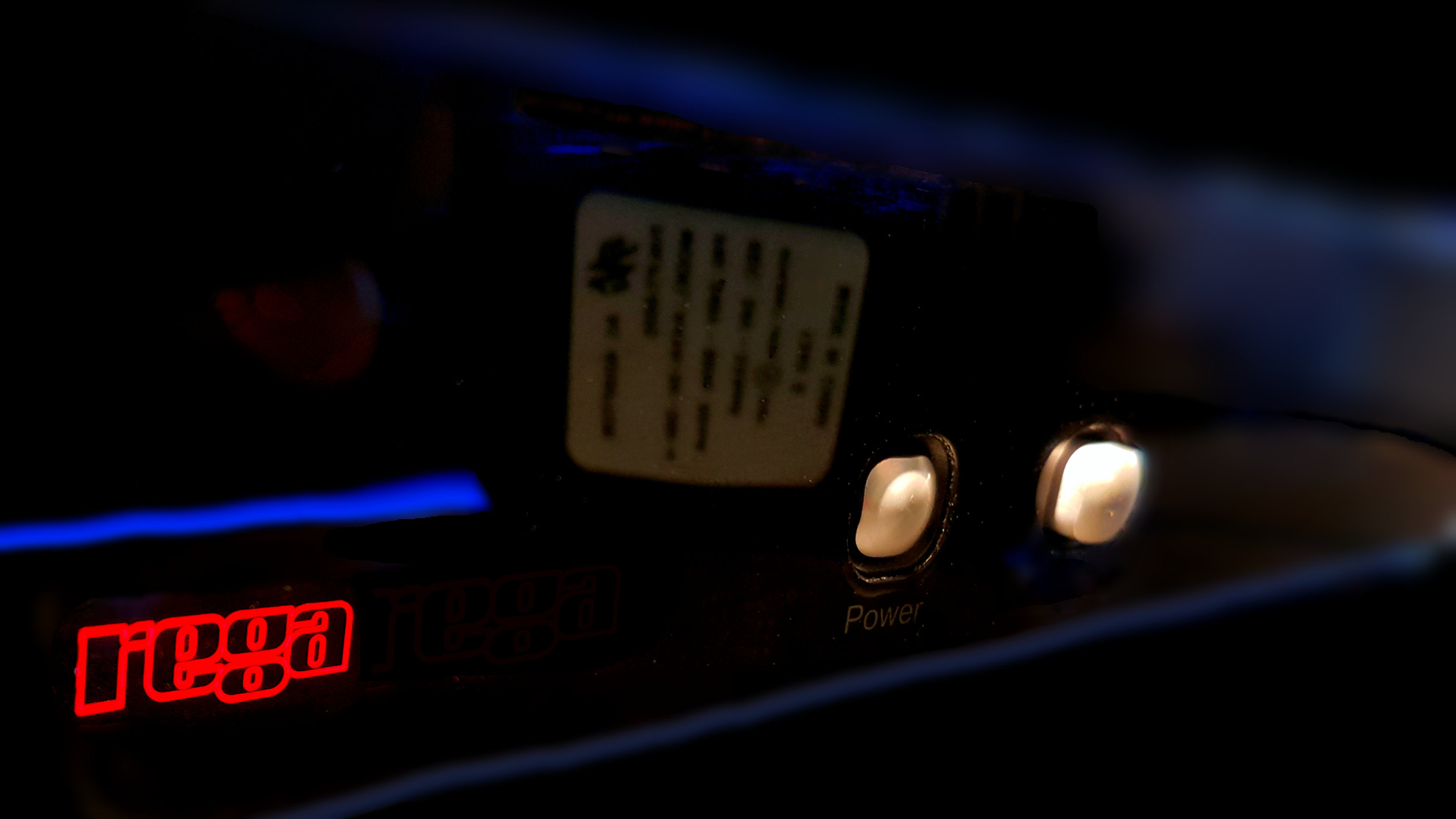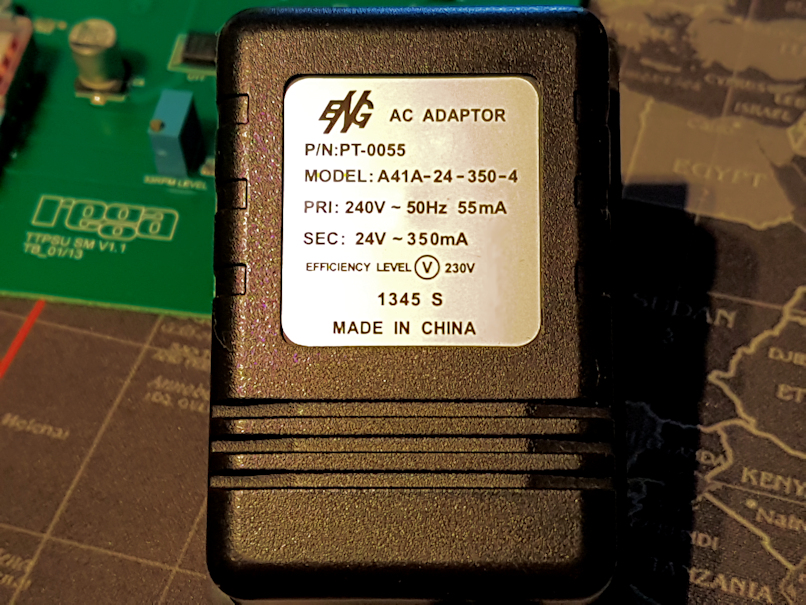I'm not a fan of the "wall wart". These generic devices supplied with hi-fi equipment are usually under-powered, low quality expressions of manufacturer torpidity. They huddle uncomfortably on crowded power boards, occasionally falling off or dropping dead. And sometimes, they buzz.
A client recently recounted the sad story of how, having replaced the humming wall wart supplied with a Rega turntable outboard PSU, the new wart droned on just as loud. A little investigation revealed that buzzing Rega warts are a common occurrence. This was not exactly a surprise, as little wall warts do tend to quiver frantically, as if aware of their inevitable demise.
The offending vibrato, soon to become castrate.
While I'm using a Rega device as an example here, they are but one of many offenders who have sullied their products with god-awful power supplies. Thorens, Oracle, Linn, Ariston, Linn, Technics, Linn and so many others benefit enormously from power supply improvements, which begs the question; why it wasn't done properly in the first place? Fortunately, at least in the case of the Rega, a simple solution is at hand. Before we go there though, we need to be aware of the extent of the problem, which is more than just an anoying buzz.
While the Rega wall wart in question proclaims a 24 volt output, the actual output will vary considerably, depending on the load (load being the amount of current it is being called on to supply). With no load, the output is actually 30 volts AC (measured above) but drops down to 26 volts AC when connected to the PSU box, then falls again with the turntable motor actually turning. This is because all that resides in the wart is a transformer. Transformers vary their output from no load to full load. The amount of this variation is referred to as regulation, which is expressed as a percentage (the lower the better). A little transformer like this one (under 10 watts) will have regulation worse than 20%, whereas a big transformer, say, 500 watts, will have a regulation figure of around 5%. I don't want to open the can of worms that is transformer design (as I'd like to get this posted before Christmas) but transformer type and quality do have a huge impact on the fidelity of any audio device they power. Manufacturers ignore this at their peril. Which gives me another reason to dislike the wall wart; the transformer is perhaps the most important part of the power supply, it should not be an afterthought. It is also usually the most expensive part of the power supply and hence a prime candidate for cost cutting; enter the wall wart. To be fair, an external wart, rather than integrated transformer, is a cost-effective way of powering products in a global market place where many different local mains voltages exist.
Back to the Rega. The wart's 26VAC output, once rectified and filtered, is about 36 Volts DC. Hang on, where did all them extra volts come from Cletus? Its because the filter capacitors charge up to the peak of the incoming wave form, not the RMS voltage:
The Ol' Yeller Fluke says 36.74VDC and it's never wrong. After 14 years of being dropped, burned, drowned, crushed, retired, resurrected and retired again it's still going strong. It's outlived numerous other meters and I still use it all day, every day. In fact, it's my 4th most used tool, after the soldering iron, side cutters and sarcasm.
OK, it's 36 volts, so what? Look at the voltage rating on those capacitors (where the red and black probes are connected). It's 35 volts. That is an absolute maximum-thou-shalt-not-exceed-or-explosions-shall-ensue rating. Good practice would be to not exceed 80% of that 35V rating. If you want to push your luck you could go to 90% but any higher and early capacitor death is inevitable.
So the buzzing wart is not actually our main concern, at least in terms of long term survival of the PSU. The solution to both problems is the same though; replace the transformer. The 1.5 amp transformer above costs less than half the price of the "genuine" 0.35 amp device next to it. It is specifically designed to be silent and being higher power (and quality), will have better regulation as well. Better, but not brilliant. We will use this to our advantage. The new transformer outputs 16VAC, not 24. This translates to about 22VDC after rectification...well it would, if not for that regulation thing, which is just as well because the resulting DC voltage is then reduced by IC regulators down to + and - 20VDC and a margin of only 2VDC isn't enough for them to work with. I'm going to avoid the temptation to stray into a treatise on regulation circuits but I will raise two points; Rega have chosen to "float" these regulators, something I don't do as regulators float almost as well as Natalie Wood, often with the same result. Secondly, the heat dissipated by these devices is reduced dramatically by lowering the input voltage to them, which is good. So, 20VDC isnt enough, but that's OK because the transformer's regulation, or lack of it, results in about 25VDC under load at the IC voltage regulators, which is perfect.
A large drill and surface mount electronics...What could possibly go wrong! A cable gland will replace the flimsy DC socket when we hard-wire the transformer.
Theoretically then, we don't need to change the 35V capacitors, as 25VDC is way within their 35VDC rating. The capacitors are 220 Micro Farad (220µF), which is kinda pathetic. For the pedantic among you, yes I know that two of these capacitors are in parallel (a pair each for the positive and negative voltage rails), so we actually have 440µF per rail, which is not pathetic, just inadequate. Since we are being so punctilious, may I take this opportunity to point out that energy storage and capacitance are not the same thing (which appears to be a common misconception). This is why a 10,000µF capacitor charged to 5 volts will make a wee spark if you short it out with a copper wire while the same capacitor charged to 450 volts will vaporise the wire and copper plate your retinas. If you really want to know how much energy (Joules) a given capacitor is actually harboring the formula is Energy = 1/2 CV^2 (where C is capacitance in Farads and V is voltage).
Replacement of these capacitors is easy, inexpensive and effective. In this case, I chose to replace the 4 x 220µF surface mount devices (SMD) with 4 x conventional 2200µF capacitors and an inductor for good measure. Use of inductors is not a worm-can, its a black art and since it isn't a Solstice full moon I'm not going to elaborate now.
One could go bigger with the filter capacitors. How big? As big as your budjet allows (watch the fuse and rectifier ratings if you go nuts here). If they don't fit upright in the Rega PSU they may be laid down, like so:
I'm told there are aftermarket linear (as opposed to switch-mode, which should be avoided) power supplies available for the Rega and other devices. That sounds like a good idea to me, however, the above modifications will provide most of the benefits of an external regulated supply at a much lower cost. If this was my turntable, I'd be looking further downstream at the regulators and beyond but the scope of this upgrade was limited by time and cost. As such, it's a cheap and effective way to silence the power supply and improve an already good turntable.
William Crampton
Now the RP8 is humming...in a good way.









